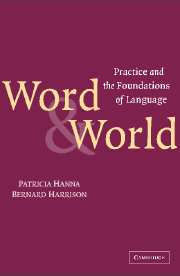9 - Meaning and Truth
Published online by Cambridge University Press: 05 June 2012
Summary
Sense and truth-conditions
It has been a commonplace of philosophy since Frege that “the sense of a sentence is determined by its truth-conditions.” But that, as it stands, is a dark utterance. We need for a start to distinguish between the sentence and its sense. A sentence is just a string of words. Different sentential strings may have the same sense: “express,” as is often said, “the same proposition.” Both (some) sentences and the propositions they express may be said to be assertoric in form, in the sense that what each expresses is the content of an assertion. It is this that makes “The cat is on the mat” an altogether different sort of logical entity from a mere string of names: “James Peter John.” So one could say that both sentences and propositions aim at truth. What one means by that, roughly speaking, is that only in the case of the kinds of sentence that express the content of a possible assertion does the question of truth arise. As Frege put it, “The only thing that raises the question of truth at all is the sense of sentences.” But to raise the question of truth and falsity is not necessarily to be susceptible of truth or falsity. Even an assertoric sentence, such as “The cat is on the mat,” cannot be said to be in its own right true or false.
- Type
- Chapter
- Information
- Word and WorldPractice and the Foundations of Language, pp. 193 - 206Publisher: Cambridge University PressPrint publication year: 2003



